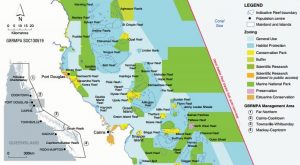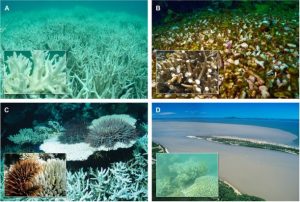Findings from the Convention of Biological Diversity have revealed some of the most biologically significant areas of the ocean – Paper by Nicholas J. Bax et al.
By Jeff Palumbo, SRC Intern
Ecologically or biologically significant marine areas (EBSAs) are the result of a global effort headed by the United Nations and the Convention on Biological Diversity (CBD) (Bax et al. 2015). The lack of marine protected areas beyond national jurisdictions was noted by the UN and addressed by the CBD. Experts from 92 countries and 79 international bodies assessed two thirds of the world’s ocean, consisting of marine areas from multiple jurisdictions. Approximately 250 million squared kilometers of the ocean’s area was evaluated and ranked based on “the naturalness criterion”. A ranked system based on biological and ecological factors, agreed upon by Parties to the CBD. Researchers found that high-ranking EBSAs were around 31%, proving the scarcity of undisturbed oceanic habitats left. In total, only 204 areas of the study site proved to abide by EBSA criteria. These actions have since lead to increased knowledge on marine spatial planning across national jurisdictions (Dunn et al. 2014).
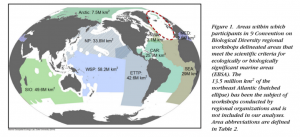
Figure 1. Areas within the study site, approximately two thirds of the world’s ocean.
Therefore, the mosaic of these important marine ecosystems could be more clearly defined internationally. Two technical teams held workshops to facilitate identifying/ranking areas that shared cross-jurisdictional boundaries and most relevant EBSA criteria. The Secretariat of the CBD hosted nine of these workshops from 2011 to 2014. This included experts from 92 countries and 79 regional/international organizations from all over the world. The workshop’s analysis finalized the 204 zones that met certain factors as EBSAs. Areas like these represent the most ecologically and biologically significant oceanic systems, based on biodiversity and the naturalness criterion (Bax et al. 2015). This information has been crucial to marine spatial planning and international negotiations on marine area management, beyond national jurisdictions.
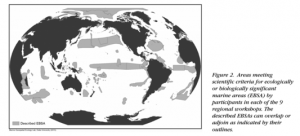
Figure 2. Areas within the study site that met the criteria for EBSA.
In fact, the results from this global effort have provided a new foundation of understanding for current marine spatial planning. The UN Convention of the Law of the Sea is a new agreement being formalized as a result. The 204 current EBSAs are being utilized as a guideline for this new legislation. It will provide a modernized system of sustainable practices and management of marine biological diversity worldwide. EBSA’s have become the key to providing an international standard and understanding to the most valuable oceanic ecosystems on our planet.
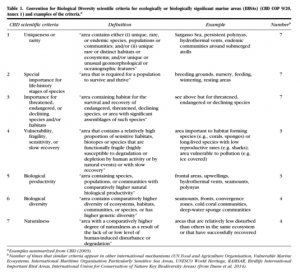
Figure 3. Examples of naturalness criteria.

